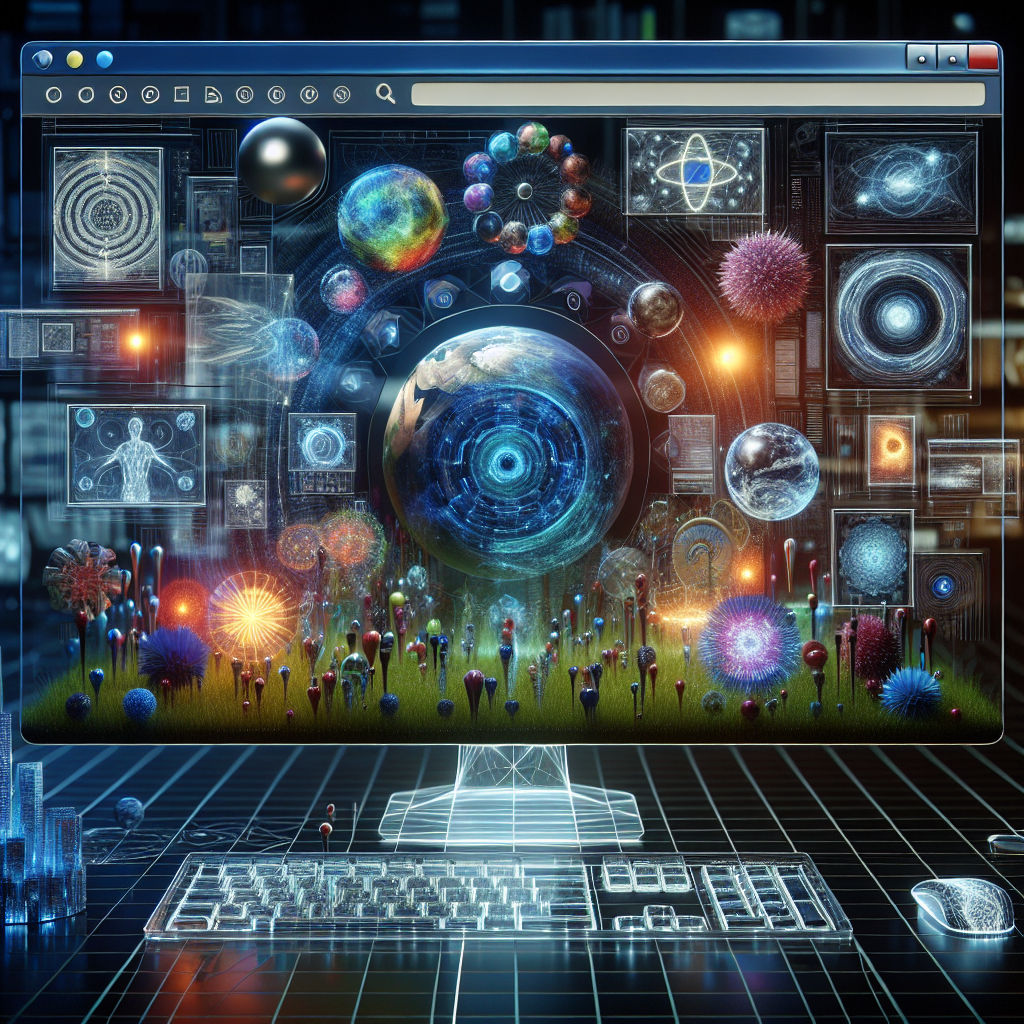Exploring AI's Creative Potential: A Dive into WebSim AI
Introduction
In the rapidly evolving landscape of artificial intelligence (AI), innovative tools like WebSim AI offer a fascinating glimpse into the future. This AI-based website generator is not just a productivity enhancer but a novel experience that invites users to explore new dimensions of creativity and functionality. Unlike traditional website builders, WebSim AI generates real-time websites based on user-defined URLs, conjuring imaginary realms that blend whimsy with technical sophistication.
The Magic Behind WebSim AI
WebSim AI operates by utilizing advanced large language models, such as Claude 3.5 Sonet and GPT-40, to generate websites on the fly. This process happens almost instantaneously, akin to the nostalgic days of early 2000s internet browsing but with a futuristic twist. Users simply enter a URL, and the AI constructs a functional HTML website complete with content that matches the given theme.
For instance, a URL like "matt'sfavoriteslemons.co.uk" yields a whimsical website detailing Matt’s obsession with discovering extraordinary lemons. Each click within the site spawns new, thematically consistent pages, creating an immersive experience that feels like exploring the internet of a parallel universe.
Generative Creativity: More Than Just Novelty
While WebSim AI's primary allure lies in its novelty, its potential applications are profound. Consider the emergent trend of generative media, where AI can customize TV shows, books, and other entertainment forms based on user preferences. Imagine a world where content is not only curated but created specifically for you, tailored to your tastes and whims. WebSim AI provides a tantalizing preview of this reality.
One standout demonstration involves generating functioning mini-games and simulators. For example, entering "keep the Apple safe from the snake. game" produces an interactive game, albeit with some quirks. Similarly, URLs like "physics simulator. G" lead to sophisticated simulations of physical phenomena, such as double pendulums and particle colliders, showcasing the AI's capability to handle complex programming tasks in real time.
Community and Collaboration
A vibrant community surrounds WebSim AI, contributing to an ever-growing library of generated websites. Users can bookmark and save their favorite creations, building a shared repository of imaginative content. This collaborative aspect emphasizes the community's role in pushing the boundaries of what AI can achieve. The website even includes features like likes and community rankings, reminiscent of social media, fostering a sense of collective exploration and discovery.
Related Reading:
Educational and Entertainment Potential
WebSim AI's capabilities extend beyond mere amusement. Its ability to generate educational simulations and interactive models holds significant promise for learning environments. For example, physics simulations demonstrating principles like pendulum motion or particle collisions can make abstract concepts tangible and engaging. Educators can leverage these tools to provide students with hands-on learning experiences that were previously unfeasible without extensive coding knowledge or resources.
Moreover, the whimsical nature of the generated content—such as government websites announcing alien overlords or humorous state disappearance updates—adds a layer of entertainment that can make educational content more accessible and enjoyable. This blend of learning and play aligns with modern pedagogical approaches that emphasize engagement and interactivity.
Challenges and Limitations
Despite its impressive capabilities, WebSim AI is not without its challenges. The AI’s interpretations aren't always perfect, sometimes resulting in partially functional or humorous misfires. For instance, a simulation of a human hand meant to showcase complex finger movements might end up as a mere framework, highlighting the limitations of current AI models in handling highly detailed commands.
Additionally, as the tool gains popularity, concerns about server overloads and sustainability come into play. The resource-intensive nature of real-time site generation means that a substantial influx of users could potentially strain the system. The developers' decision to release this tool in a sort of beta state underscores the experimental and exploratory nature of the project.
Conclusion
WebSim AI stands as a testament to the boundless creative potential of generative AI. Its ability to craft entire websites from simple URL prompts opens up new avenues for creativity, education, and entertainment. Though it has its limitations, the platform offers a compelling glimpse into a future where AI-driven content generation becomes an integral part of our digital landscape.
As AI technologies continue to evolve, tools like WebSim AI will undoubtedly become more refined and versatile, making their way from playful novelties to essential components of our everyday digital toolkit. For now, WebSim AI invites us to dream, explore, and marvel at the imaginative worlds it conjures, reminding us that the future of AI is not just functional but fantastically fun.
For those inspired to delve deeper, the full demonstration can be viewed here:
Explore the future of AI with WebSim AI and embark on a journey through the limitless possibilities of generative content. Whether for educational purposes, entertainment, or just a bit of digital whimsy, this tool is a delightful window into the evolving capabilities of artificial intelligence.
Related News
- Exploring Web Sim: The AI-Powered Virtual Web Playground
- Web Sim: Revolutionizing Web Creation with AI
- Deep Dive into Generating AI Imagery: Exploring the Potential and Pitfalls
- Unleashing Creativity: A Dive into the World of Advanced AI
- Exploring the Frontier of AI: Unveiling the Tools Shaping the Creative and Professional Worlds
